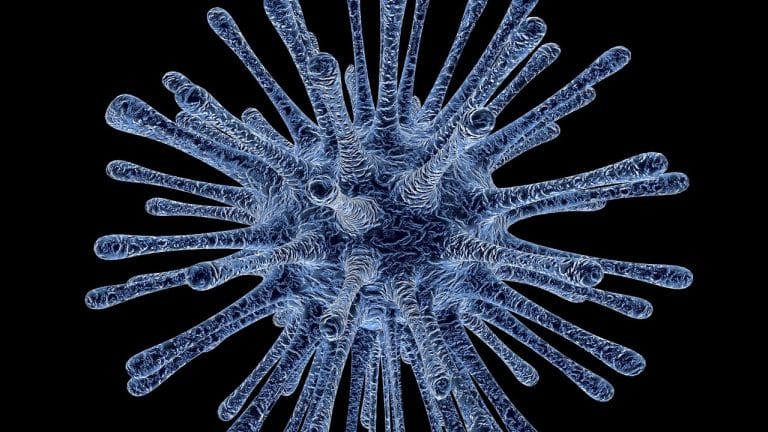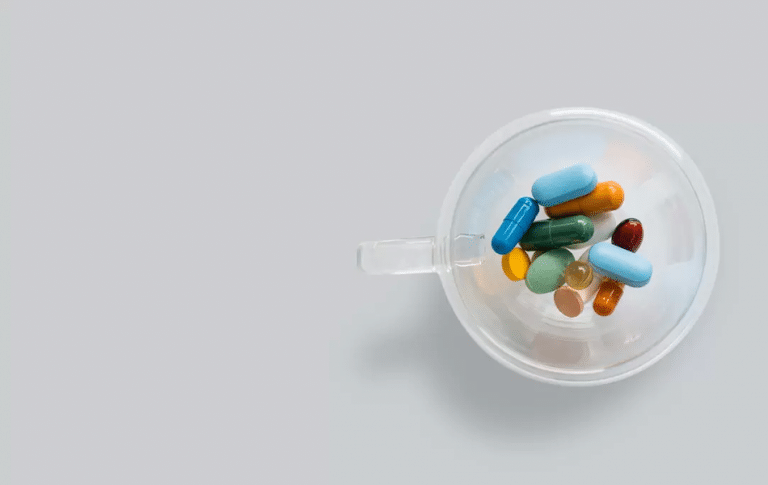25 Vitamin B3 Foods You Should Add to Your Daily Menu in 2024

Vitamin B3, or niacin, belongs to B-complex vitamins. Niacin is one of the essential nutrients that our body needs to function normally. Some of its health benefits are enhancing mental health, lowering the risk of heart diseases, and decreasing bad cholesterol.
That’s why it is important to include vitamin B3 foods in your diet. If you are not sure where niacin can be found, this article will provide you with a list of healthy foods that contain this vital nutrient.
What Is Vitamin B3?
Being one of the water-soluble vitamins, niacin is not stored in the body in large quantities. Most excess amounts of this vitamin are excreted through the urine. Niacin, another vitamin B3 name, was created by blending three words into one – nicotinic acid vitamin.
That said, nicotinic acid isn’t the only form of vitamin B3. Other forms include nicotinamide, inositol hexanicotinate, and related derivatives. Interestingly, they all have different uses in the body.
Vitamin B3 Benefits
Like all B vitamins, vitamin B3 aids the body in breaking down carbohydrates, fats, and proteins and converting them into energy. Another vitamin B3 function is the regulation of cholesterol levels in your body. Not only does it lower bad cholesterol, but it also increases good cholesterol. Therefore, niacin may reduce the risk of heart disease. In addition to cholesterol management, vitamin B3 can decrease the levels of triglycerides.
Furthermore, niacin benefits are key to mental health. Some of them include treating some mood disorders, like depression and anxiety. What’s more, some of the benefits of taking niacin involve treating some types of schizophrenia. There are even studies examining the role of niacin in preventing Alzheimer’s disease.
Niacin’s health benefits also include protecting our skin from sun damage and preventing certain types of skin cancer. Numerous studies on common skin cancers have shown the positive effects of nicotinamide, niacin’s active form.
Niacin Foods
Many foods contain vitamin B3. Both animal-based and plant-based foods are good sources of niacin. This nutrient is also added to certain types of foods, such as cereals and infant formulas.
In addition, foods that are rich in tryptophan are considered excellent sources of vitamin B3—niacin. That’s because tryptophan can be converted to NAD (nicotinamide adenine dinucleotide), which is the active form of niacin.
All in all, all of us need to know what foods have vitamin B3, so here’s a list of some great sources of this essential nutrient.
Beef
Beef liver is especially rich in niacin. In fact, one slice of pan-fried beef liver covers 71% of the daily value (DV) of vitamin B3, securing its place among niacin foods. What’s more, three ounces of pan-browned ground beef (90% lean meat) will land you 29% of the vitamin’s DV.
Chicken
Other common meats, like chicken, are also excellent sources of vitamin B3. In fact, three ounces of cooked, boneless, skinless chicken breast will supply about 81% and 71% of the RDA for women and men, respectively. Furthermore, chicken is an excellent source of vitamin D, vitamin B, calcium, iron, zinc. It also has trace amounts of vitamin C and A.
Turkey
With a three-ounce serving of cooked (simmered) turkey liver, you will cover about 21% of the vitamin’s DV, placing this meat high among the foods with niacin. In addition, turkey is a source of zinc, iron, and phosphorus, and its regular consumption helps lower cholesterol levels.
Pork
You can find niacin in this food, too. As a matter of fact, three ounces of bone-in broiled pork chop supplies 33% of the vitamin’s DV. In addition, pork is considered a good source of vitamin B12 and vitamin B6, protein, iron, and zinc. It contains all of the nine essential amino acids critical for the proper development of the human body.
Salmon
This low-mercury fish belongs to foods high in vitamin B3. A typical serving (3 oz.) of cooked sockeye salmon will cover 54% of the vitamin’s DV. In addition, it is rich in omega-3 fatty acids, which have a wide range of health benefits, such as improving mental health and preventing certain types of cancer.
Tuna
Just like red salmon, tuna belongs to the good sources of vitamin B3. Namely, three ounces of drained, canned, and light tuna supply 54% of niacin’s DV. It is also rich in other vital nutrients, including vitamin B12, vitamin B6, and selenium. Eating tuna is related to lowered risks of cardiovascular disease and heart attack.
Brown Rice
Besides meat and fish, various foods of plant origin are high in niacin. In other words, there are several vitamin B3 foods vegetarians could include in their diet. Brown rice is undoubtedly one of those. One cup of cooked brown rice covers 33% of niacin’s DV. Additionally, its dietary fiber is considered to lower the risk of heart disease death.
Whole Wheat Bread
Since whole grains are more nutritious than refined grains, this type of bread is an excellent choice for those looking for foods rich in niacin. One slice of whole-wheat bread will supply you with 9% of niacin’s DV. Furthermore, it’s packed with a range of important minerals, like magnesium, iron, and selenium.
Bulgur
Another food with niacin is bulgur. Notably, a cup of cooked bulgur offers 9% of the vitamin’s RDI. Since it’s a high-fiber food, bulgur wheat is an excellent addition to a fiber-rich and low-fat diet, helping with weight management.
Peanuts
When it comes to taking vitamin B3 for skin health, peanuts are a great option. One ounce of dry roasted peanuts covers 26% of the vitamin’s DV. In addition, they are rich in vitamin E, which is a powerful antioxidant with additional benefits for your skin. All in all, peanuts are excellent vitamin B3 foods for vegans.
Sunflower Seeds
Sunflower seeds are packed with healthy nutrients. Namely, one ounce of dry-roasted sunflower seeds covers 13% of vitamin B3’s DV, making these seeds valuable niacin food sources. What’s more, they are a great source of vitamin B6 and some crucial minerals, such as iron and magnesium.
Pumpkin Seeds
It is yet another food rich in niacin. An ounce of dry-roasted pumpkin seeds supplies 8% of the vitamin’s DV. Moreover, these seeds are full of powerful nutrients, fiber, magnesium, and antioxidants. Pumpkin seeds are also associated with improved prostate, bladder, and heart health, as well as low blood sugar levels.
Potatoes
There is a wide range of vegetables high in niacin and potatoes are among them. One baked (russet) potato of medium size provides 14% of the vitamin’s DV. Other nutrients that are found in this veggie include vitamin B6, potassium, and manganese. What’s more, potatoes are believed to improve blood sugar control, boost immunity and reduce the risk of heart disease.
Lentils
Lentils are yet another valuable food that contains niacin. Notably, in half a cup of boiled and drained lentils, you will get 6% of the vitamin’s DV. What’s more, the seeds are a rich source of vitamin B6, iron, and magnesium. Finally, this type of legume is high in protein, making it an excellent meat substitute.
Green Peas
Green peas also belong to vitamin B3-rich foods. One cup of cooked green peas contains 20% of niacin’s DV. Just like other types of legumes, they have a high protein content. Moreover, they provide you with a fair amount of vitamin K, fiber, vitamin A, iron, magnesium, and vitamin B9.
Edamame
Edamame beans are immature soybeans that are harvested before they are fully ripe. Half a cup of prepared frozen edamame serves 4% of niacin’s DV, making them vitamin B3 foods worth looking into. Furthermore, these beans are rich in minerals and vitamins, such as iron, magnesium, copper, folate, and vitamin K. It is also an excellent protein and dietary fiber source.
Broccoli
Broccoli contains large amounts of several minerals and vitamins, including B3. Namely, half a cup of boiled, drained, and chopped broccoli supplies 3% of niacin’s DV. Besides vitamin B3, vitamin K and vitamin A can also be found in this veggie in high concentrations. It’s also a great source of potassium and manganese.
Cherry Tomatoes
Other vitamin B3 foods are cherry tomatoes, as in half a cup of cherry tomatoes, you will get 3% of niacin’s DV. This type of tomato is as healthy as any other since it is a rich source of vitamin C, vitamin A, and vitamin K. Furthermore, manganese and potassium are just some of the minerals these tomatoes contain.
Bananas
Bananas are another example of foods with vitamin B3. One medium banana can cover 5% of the vitamin’s DV. Moreover, this fruit is an excellent source of fiber and minerals, such as potassium and magnesium. Bananas are linked to digestive health, weight loss, and heart health.
Raisins
Raisins are yet another example of valuable niacin foods. In half a cup of raisins, you will get 4% of the vitamin’s DV. They also contain other B vitamins, like thiamine, riboflavin, and vitamin B6. Furthermore, raisins are rich in potassium, manganese, and iron. Despite raisins’ health benefits, you should always eat them in moderation as they are high in sugar.
Avocados
Avocados have high amounts of various vitamins and minerals. They belong to vitamin B3 sources as a 3.5-ounce avocado serving covers 11% of niacin’s DV. In addition to being a highly nutritious fruit, avocados are also low in sugar, making them extremely healthy.
Mangoes
Mangoes offer many health benefits as they contain a whole range of vitamins and minerals. What’s more, they belong to vitamin B3 fruits. For instance, if you eat one cup of canned mango, you will cover about 7% of niacin’s DV. This fruit is also exceptionally high in vitamin C and vitamin A.
Nectarines
Besides being rich in many nutrients, nectarines are low in calories, making them perfect for your snack. Those with a sweet tooth might find the fruit the best source of niacin, as, from one cup of nectarines, you will get 10% of the vitamin’s DV. Moreover, they are a good source of vitamin C, meaning they can boost your immune system.
Marinara Sauce
This spaghetti sauce is one of the best niacin sources. Namely, a cup of this ready-to-serve sauce provides approximately 64% of the vitamin’s DV. Moreover, the sauce is rich in vitamin C — 1/2-cup serving of it supplies 24% of the vitamin C’s DV.
Soy Milk
Soy milk also provides B3 benefits. A cup of unfortified soy milk covers around 6% of niacin’s DV. It is rich in omega-3 fatty acids — healthy fats the body cannot form on its own. Not only does soy milk help support healthy organs and muscles, but it even reduces the risk of dementia and Alzheimer’s disease.
Daily Intake Recommendations
The Dietary Reference Intakes, created by the Food and Nutrition Board (FNB) at the Institute of Medicine of the National Academies, provide you with intake recommendations for B3 vitamin and other vital nutrients.
The recommended dietary allowances (RDA) for niacin differ depending on age and sex. They are expressed in mg of niacin equivalents (NE), where one niacin equivalent equals 1 mg of niacin or 60 mg of amino acid tryptophan, converted to niacin in the body.
No matter whether your niacin intake is based on a balanced diet or vitamin B3 tablets, here you can find the recommended dietary allowances for this crucial nutrient:
- from birth to 6 months — 2 mg
- from 7 to 12 months — 4 mg NE
- from 1 to 3 years — 6 mg NE
- from 4 to 8 years — 8 mg NE
- from 9 to 13 years — 12 mg NE
- 14+ years — 16 mg NE (male) and 14 mg NE (female)
Note that women need more vitamin B3 during pregnancy and lactation. They should increase their daily intake to 18 mg NE while pregnant and to 17 mg NE while breastfeeding.
Niacin Deficiency
The symptoms of this deficiency can be both physical and mental. Some of the vitamin B3 deficiency symptoms are skin problems, headaches, fatigue, diarrhea, depression, memory loss, and mental confusion. This nutrient deficiency is mainly related to poverty, as an inadequate diet usually causes it.
Severe vitamin B3 deficiency leads to a disease called pellagra. The symptoms of this condition include a pigmented rash on skin exposed to sunlight, a bright red tongue, and problems with the digestive tract, such as constipation, diarrhea, or vomiting. Pellagra can also cause neurological problems, including depression, memory loss, and hallucinations. If it is not treated correctly, it can even lead to death.
Who Should Take Niacin Supplement?
People who don’t follow a healthy, balanced diet can suffer from this vitamin deficiency. It usually affects people who live in poverty, but an inadequate level of vitamin B3 may also be caused by excessive alcohol use, AIDS, or inflammatory bowel disease. In addition, people with an inadequate intake of other nutrients might have problems with the conversion of tryptophan to niacin. They all can benefit from taking a vitamin B3 supplement.
Supplements are also recommended to people with severe medical conditions, such as Hartnup disease and carcinoid syndrome. Hartnup disease harms the absorption of tryptophan, and it increases its excretion in the urine. On the other hand, people with carcinoid syndrome have a problem with a lack of tryptophan as it is oxidized to serotonin instead of being converted to niacin.
Vitamin B3 Side Effects
Consuming foods that are rich in niacin cannot usually cause any adverse effects. However, high doses of a vitamin B3 supplement in the form of nicotinic acid or nicotinamide can have negative effects on your health.
A common side effect of nicotinic acid is flushing, which is the result of blood vessel dilation. Besides flushing, people often feel itching, tingling, and burning sensations. Sometimes, other niacin side effects, such as headaches, dizziness, and low blood pressure, can also be present.
Really high doses of nicotinic acid (1,000–3,000 mg/day) can have more adverse effects. They include hypotension, insulin resistance, nausea, heartburn, abdominal pain, and impaired vision. People who take high doses of nicotinic acid to reap B3 vitamins’ benefits may instead have increased levels of liver enzymes, develop hepatitis, or experience acute liver failure over a more extended period.
Nicotinamide is less toxic than nicotinic acid. That being said, a daily dosage of 3,000 mg can cause nausea, vomiting, and signs of liver toxicity.
Finally, note that the FNB has defined Tolerable Upper Intake Levels for supplemental niacin. These values apply to healthy individuals who aren’t taking a niacin supplement for medical reasons.
Conclusion
Niacin, or vitamin B3, plays a crucial role in many metabolic processes, so it is of great importance to include foods rich in this nutrient in your eating plan. Conversely, a poor diet lacking niacin-rich sources can lead to B3 deficiency, whose most serious form is pellagra.
That being said, make sure you consult a healthcare professional about the possibility of taking supplements. A doctor will help determine the exact dose and dosage to address your needs and avoid potential side effects.
FAQs
What does vitamin B3 do?
Vitamin B3, or niacin, plays a significant role in transforming food — carbohydrates, protein, and fat — into energy. Other benefits of niacin include regulating the levels of cholesterol in the body and contributing to heart health. In addition, it is crucial for the normal functioning of the nervous system. Vitamin B3 is also responsible for skin health as it protects it from harmful sun rays.
Are vitamin B3 and niacin the same thing?
Vitamin B3 is commonly known as niacin (nicotinic acid). It has two more forms. They are niacinamide (nicotinamide) and inositol hexanicotinate. Note that both of them have different effects compared to niacin.
What are the symptoms of lack of vitamin B3?
The most common symptoms of the lack of vitamin B3 are red, irritated skin, problems with the digestive tract, headaches, fatigue, and depression. The most severe form of niacin deficiency symptoms in adults (as it rarely occurs in infancy) can be caused by pellagra. It includes red, itchy patches of skin, nausea, vomiting, diarrhea, mood changes, anxiety, confusion, and memory problems.
What does vitamin B3 do for your skin?
Vitamin B3 brings several benefits to your skin. One of the niacin skin benefits is helping you smoothen out wrinkles and reduce uneven skin tone. It’s also used for treating acne and reducing hyperpigmentation. Moreover, the benefits of B3 include protecting the skin from sun damage. According to some research, it is also effective in preventing non-melanoma skin cancers.
What foods are high in B3?
Some of the best natural sources of this vitamin are liver, chicken and turkey breast, salmon, and tuna. Also, anchovies have a high niacin content. When it comes to niacin-rich foods for vegetarian people, vitamin B3 can be found in millet flour, white button mushrooms, portabella mushrooms, peanut butter, brown rice, and many veggies and fruits. For example, avocados, green peas, potatoes, and cantaloupe melons are rich in niacin.
How can I get vitamin B3 naturally?
Your body needs niacin to function correctly. That said, the most natural way to get enough of this vitamin is through the food you consume, so you have to make sure you eat foods high in niacin. Be that as it may, many people take a B3 supplement to ensure they get enough of it.
Do eggs have niacin?
Yes, they do. In fact, the Dietary Guidelines for Americans have introduced healthy dietary sources of niacin, and eggs are on that list. So are various vegetables, fruits, and grains. These guidelines also suggest limiting alcohol intake and cutting down on foods and drinks high in added sugars.
What fruits and vegetables are high in niacin?
Various fruits are considered excellent sources of vitamin B3. They include avocados, mangoes, passion fruit, guavas, nectarines, and bananas. These fruits contain at least 1 mg of niacin per serving. Also, there is a range of vegetables that are high in niacin. Some of them are potatoes, peas, lentils, green peas, asparagus, tomatoes, and acorn squash. All these vitamin B3 foods should become part of your everyday diet since your body greatly depends on your niacin intake.






